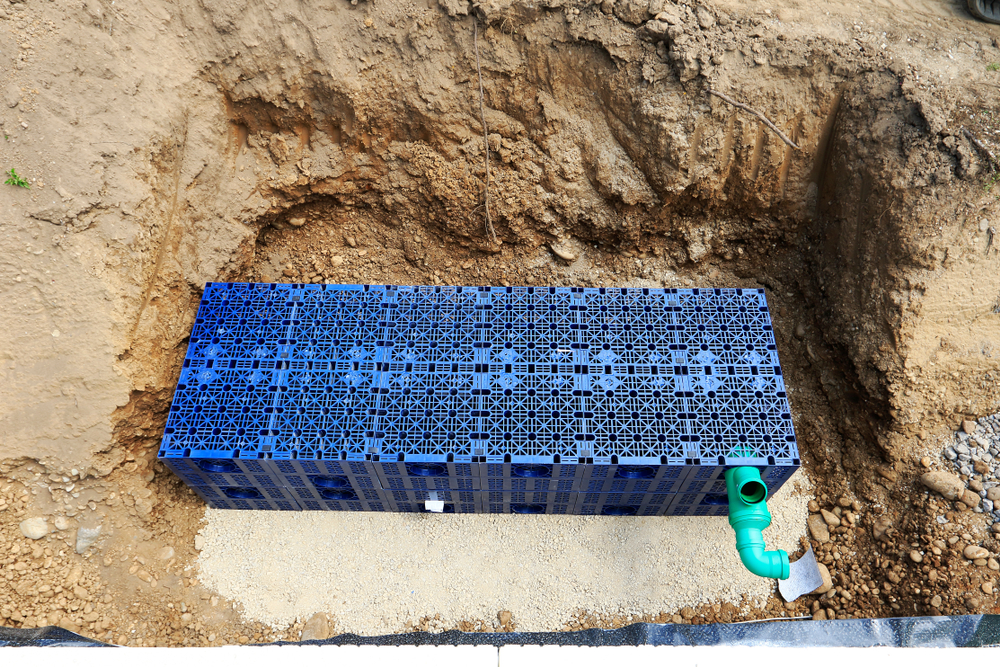Environmental consciousness is becoming increasingly prominent, and as a result, sustainable building design has become a necessity. One of the core principles of sustainable construction is adhering to BRE365 standards, and if you’re a civil engineer, architect, property developer, or another occupation involved with building design, it’s essential you understand the facts behind BRE365 soakaway testing. In this blog, we will explore what BRE365 is, the significance of these standards and how they play a vital role in shaping the future of our built environment.
What is BRE365?
The Building Research Establishment Environmental Assessment Methodology, commonly known as BRE365, is a set of standards and guidelines developed to promote and assess the environmental performance of buildings. It provides a comprehensive framework for sustainable building design, encompassing various aspects such as energy efficiency, materials, water use, and ecological impact.
A BRE365 soakaway test, also known as BRE365 percolation test, is imperative when working with building design, and has gained widespread recognition and importance for its ability to guide the creation of a successful building project.
Legal and Environmental Requirements
The importance of adhering to BRE365 standards goes beyond best practices; it is legally mandated in many places. Meeting these standards is not just an option but a requirement to ensure that our buildings are constructed in a way that minimises their impact on the environment. This is crucial to mitigate climate change, reduce resource depletion, and protect the natural world.
By adhering to the findings of BRE365 soakaway testing, we can reduce the carbon footprint of our buildings, conserve water resources, and protect local ecosystems. Sustainable building design is a key contributor to a greener and healthier planet.
What are the Key Principles of BRE365?
BRE365 standards are built on fundamental principles that guide the design and construction of environmentally responsible buildings. These principles include:
-
- Energy Efficiency: Designing buildings to be energy-efficient, ensuring they consume less energy and produce fewer carbon emissions. This helps to reduce the environmental impact of the project.
- Material Selection: Choosing sustainable and locally sourced materials to reduce the environmental impact associated with transportation and production. This can also contribute to significant cost savings.
- Water Conservation: Implementing strategies to minimise water consumption and maximise water efficiency, further contributing to eco-friendly practices.
- Ecological Responsibility: Creating spaces that foster biodiversity and minimise disruption to local ecosystems. Greener spaces also have a higher market value and are more attractive to environmentally conscious tenants and buyers.
- Waste Reduction: Minimising waste generation during construction and encouraging recycling and reusing materials.
Challenges and Solutions
While the benefits of BRE365 are undeniable, implementing sustainable building design can present SOME challenges. Common obstacles include higher upfront costs, resistance to change, and a lack of awareness. However, these challenges can be overcome with careful planning and the expertise of professionals in the field.
- Higher Upfront Costs: Sustainable design may have higher initial costs, but it pays off through lower operational expenses and long-term savings.
- Resistance to Change: It’s essential to educate stakeholders about the long-term benefits and importance of sustainable building design.
- Lack of Awareness: Work with experts like Onn Point to ensure that you have access to the latest knowledge and technologies in sustainable construction.
How Can Onn Point Help?
Here at Onn Point, we’re your trusted partner in achieving BRE365 standards and sustainable building design. Our BRE365 percolation testing and soakaway calculations are pivotal tools in ensuring that your project not only meets regulatory standards but also actively contributes to sustainable building design. With a team of experienced professionals and a commitment to creating environmentally responsible structures, our experts can guide you through the complexities of sustainable architecture and construction to help you minimise the environmental impact of your project
Get in touch today to enhance your projects, conserve and contribute towards a greener future.

